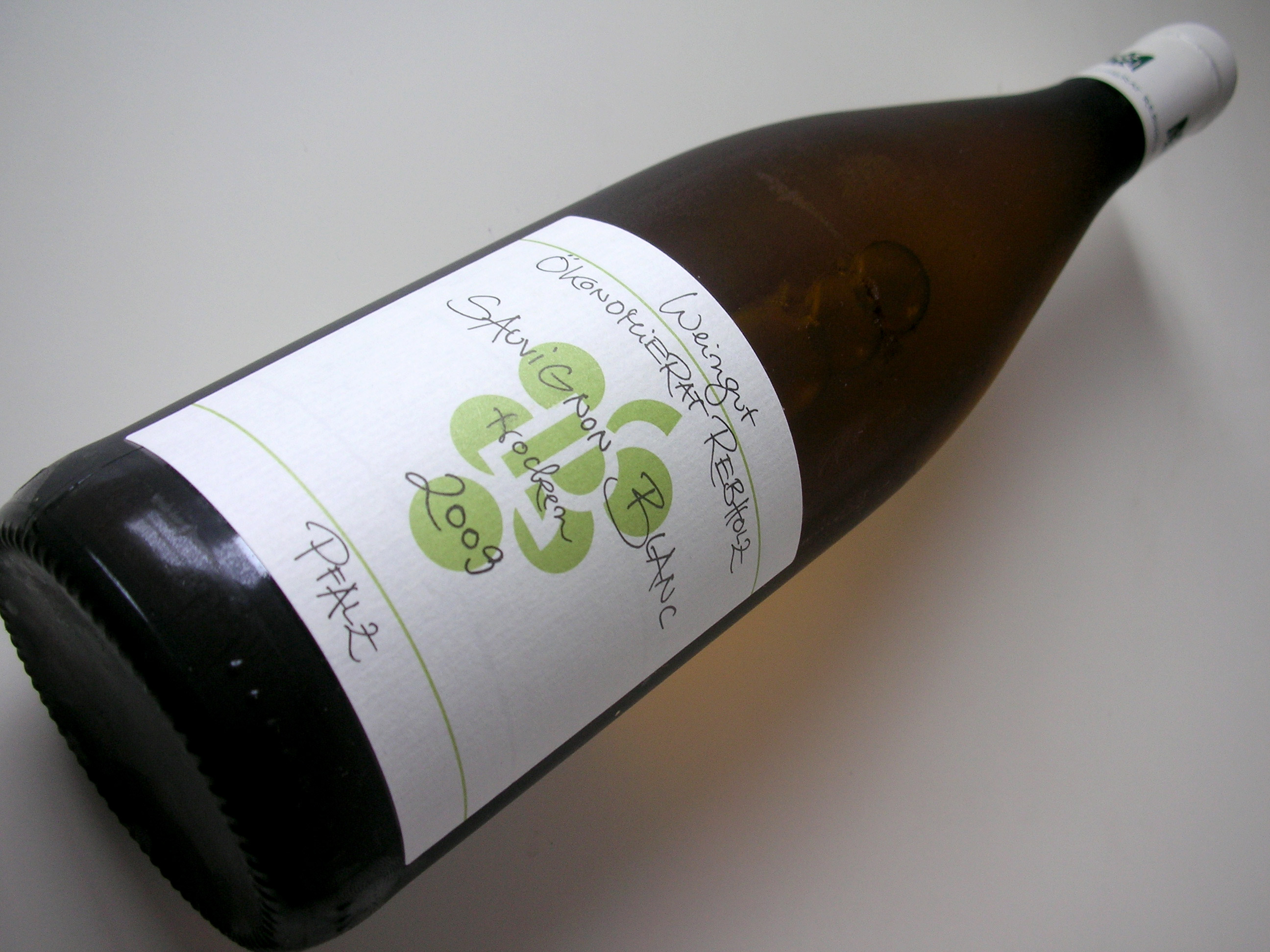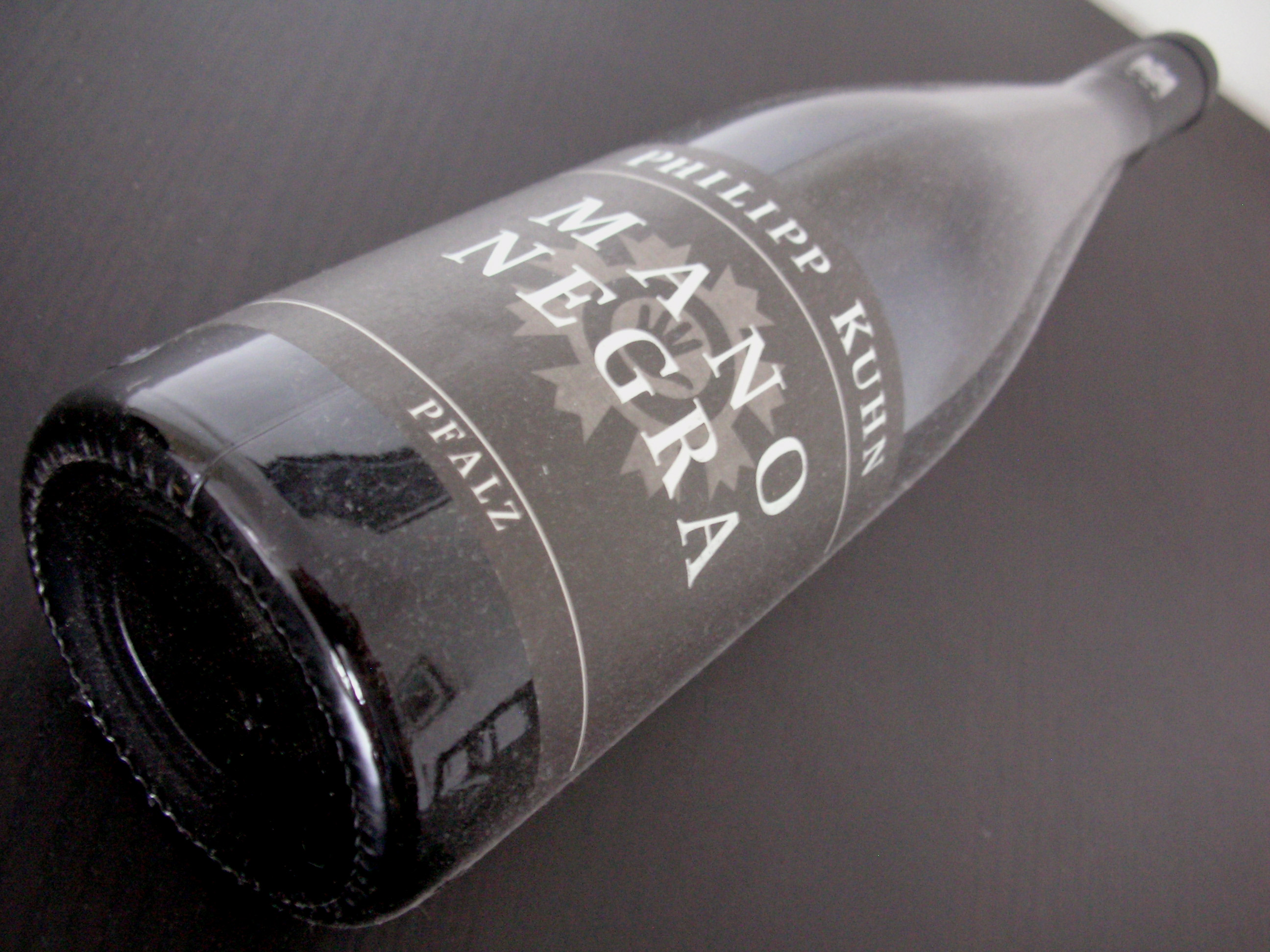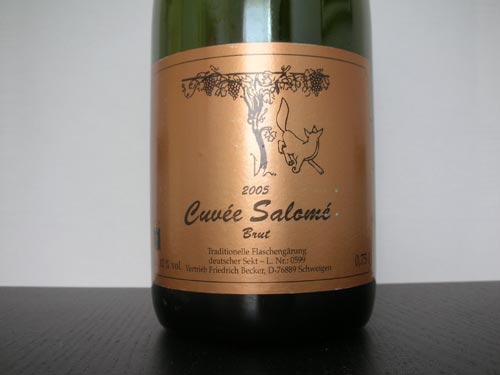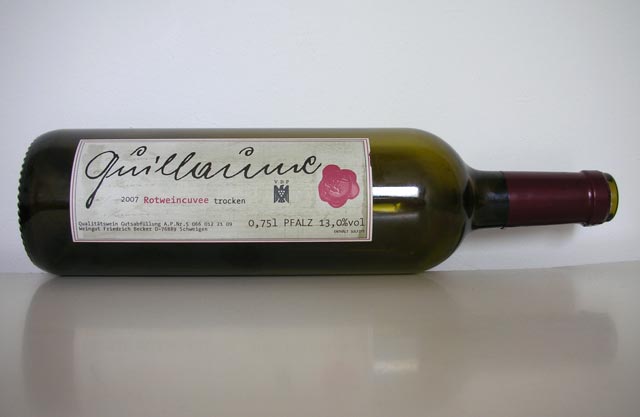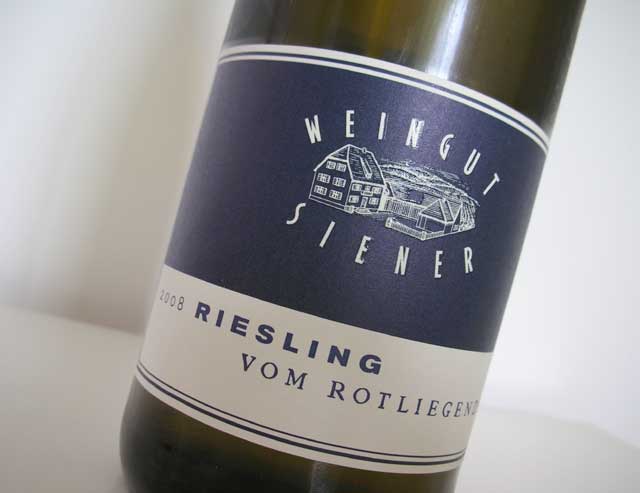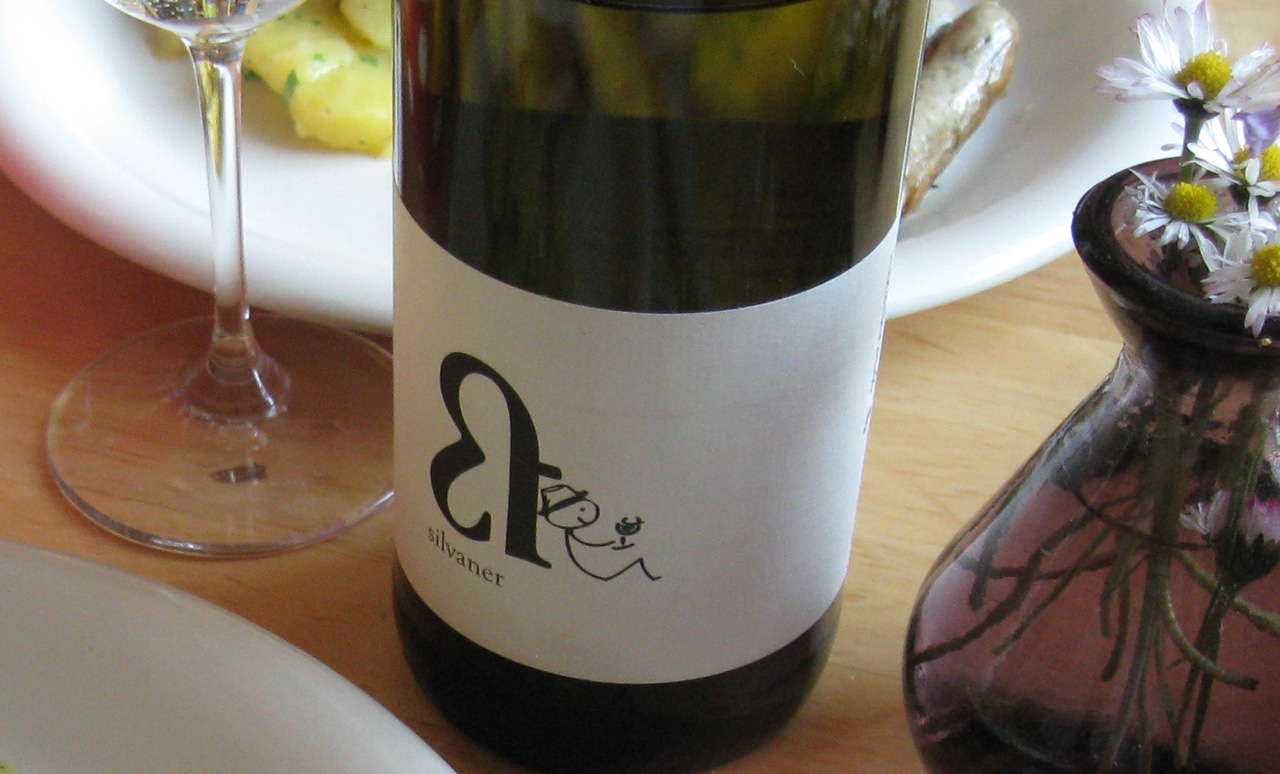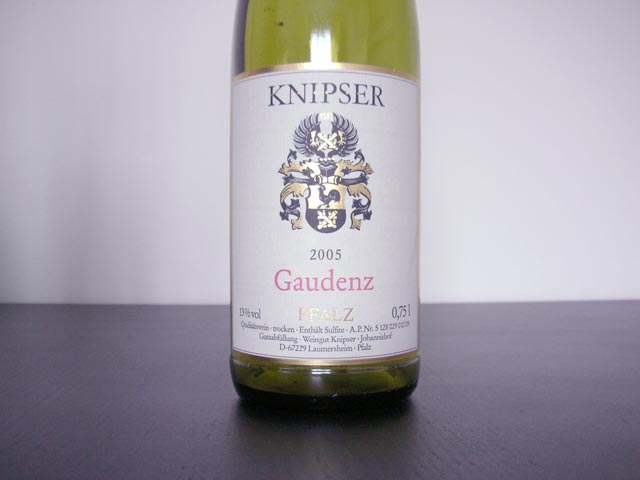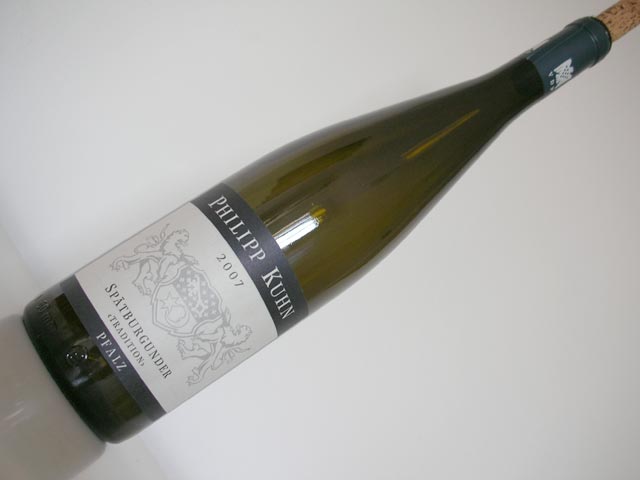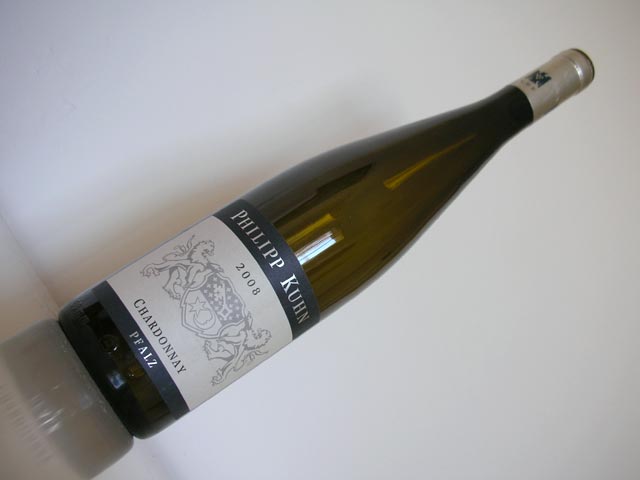Knipser, Sauvignon Gris, 2007
Never heard of Sauvignon Gris? If not, don't be ashamed, it is hardly a well known variety and I have to admit that I was only dimly aware of its existence until I saw this wine in the Knipser portfolio. The Knipser winery is one of Germany's best, so I was very curious to see what they would make of this unknown variety. Knipsers are big believers in maturing wines properly before releasing them to the market, often using barrique barrels, and this beauty only went on sale two years after the harvest. So, what is it like?
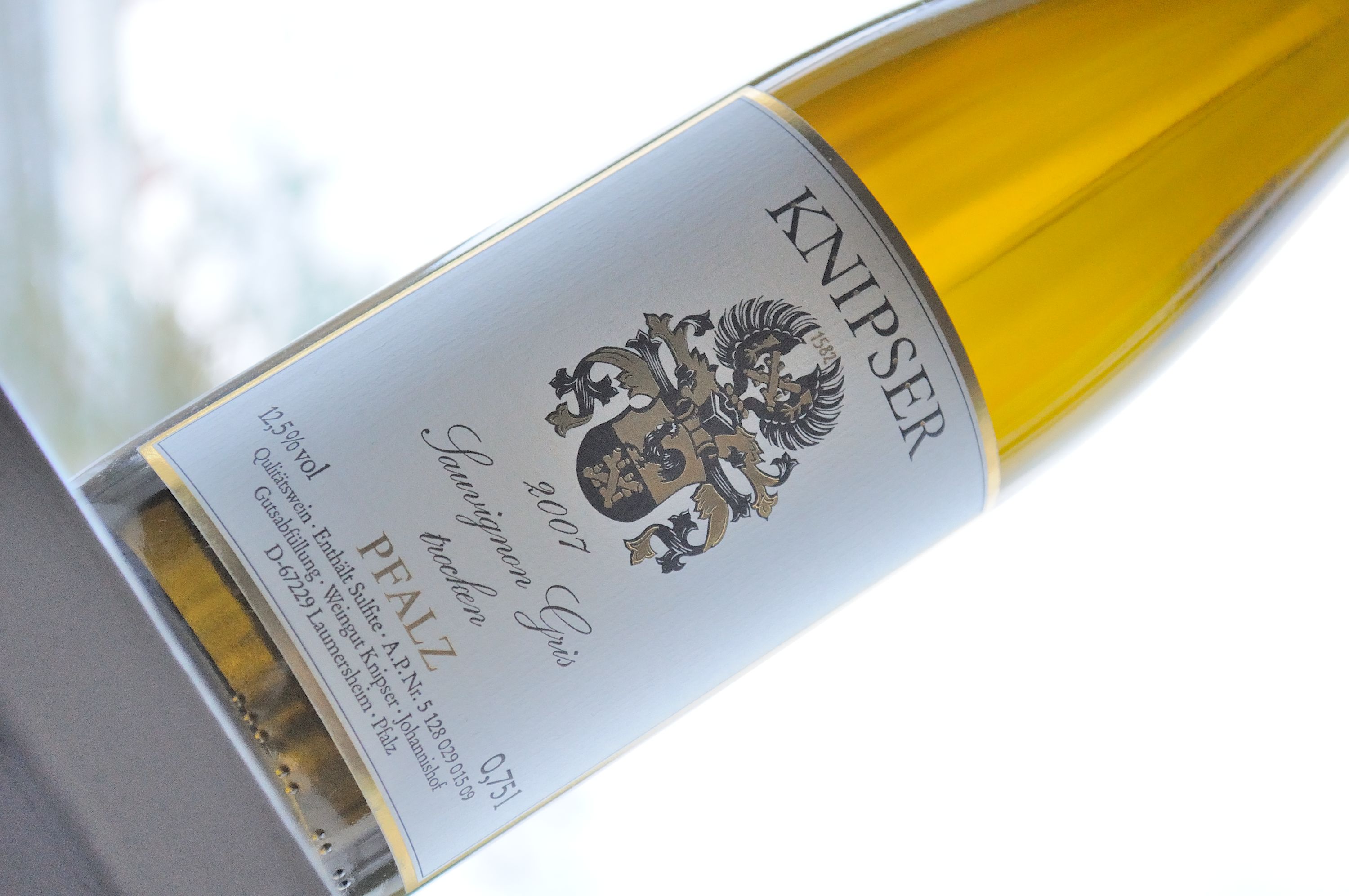
Let's start with a boring, albeit short, lecture on the grape variety.

